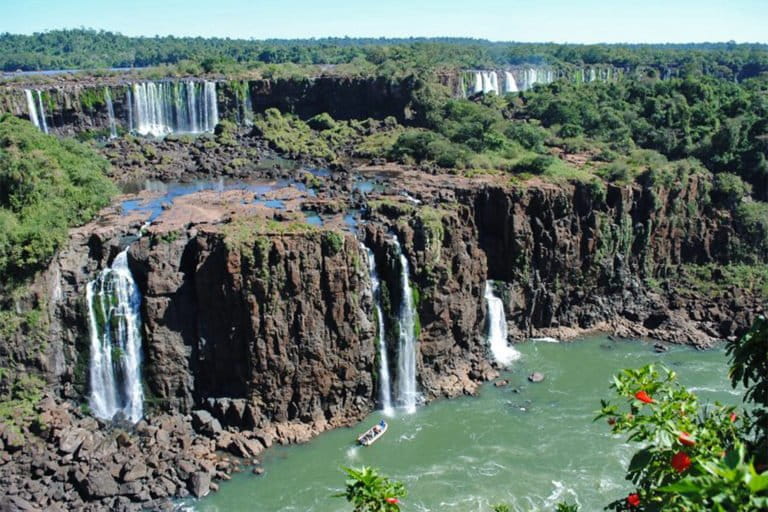Imagine That! Record Drought, Deforestation Combine To Threaten Water Supply For Brazil's Cities
Central and southern Brazil are facing their worst drought in almost a century, with many of the country’s giant hydroelectric power plants already operating at a fraction of full capacity, agricultural harvest forecasts being scaled down, and fears mounting that Amazon fires will be worse than ever this August. Electricity rationing looms. For the second year in a row, lack of rain at Iguaçu Falls on the border with Argentina — famous for the huge volume of water plunging over its cliffs — has been transformed into timid trickles.
Farmers say they fear poor harvests of some crops, notably coffee and sugar. “I’ve been growing coffee for more than 50 years, and I’ve never seen as bad a drought as the one last year and this year,” Christina Valle, a third-generation coffee grower in Minas Gerais, Brazil’s biggest coffee-growing state, told The Wall Street Journal. The price of coffee on the world market has reached its highest level in two years.
In early July, the National Water and Sanitation Agency (ANA), Brazil’s water regulator, declared a “critical shortage of water resources,” effective until November, for the vast Paraná River Basin. A third of Brazil’s people live here, many in major urban centers, like São Paulo, the largest city in the Western Hemisphere. It is the basin that both produces and consumes the most hydropower. After flowing through Paraguay and Argentina, these waters stream into the Atlantic via the Río de la Plata estuary.

The Iguaçu Falls on the Argentina border used to be famous for the huge volume of water plunging over its cliffs. Image by Arian Zwegers via Wikimedia Commons (CC BY 2.0).

For the second year in a row, lack of rain at Iguaçu Falls has been transformed it into timid trickles. Image courtesy of 100 Fronteiras.
EDIT
According to MapBiomas, an internet platform that monitors Brazilian land use, almost half (43.7%) of the Cerrado’s native vegetation has already been destroyed due to a rapid expansion of agribusiness in the region over recent decades. The pace of deforestation there continues to gain momentum: 7,300 square kilometers (2,818 square miles) of savanna were lost last year, an increase of 12.3% compared with 2019. And that native vegetation loss, say researchers, is impacting the nation’s water supply.
Eight of Brazil’s river basins rise in the Cerrado, known as the “birthplace of waters.” And the biome’s native vegetation plays a fundamental role in the way those rivers provide the whole country with a sufficient water supply. Native vegetation, especially grasses, have deep roots, allowing plants and animals to survive during the dry season, reducing erosion, and holding vast volumes of water below ground. That’s why this region is able to replenish its water tables, aquifers and rivers with each new rainy season.
EDIT
https://news.mongabay.com/2021/07/amazon-and-cerrado-deforestation-warming-spark-record-drought-in-urban-brazil/

